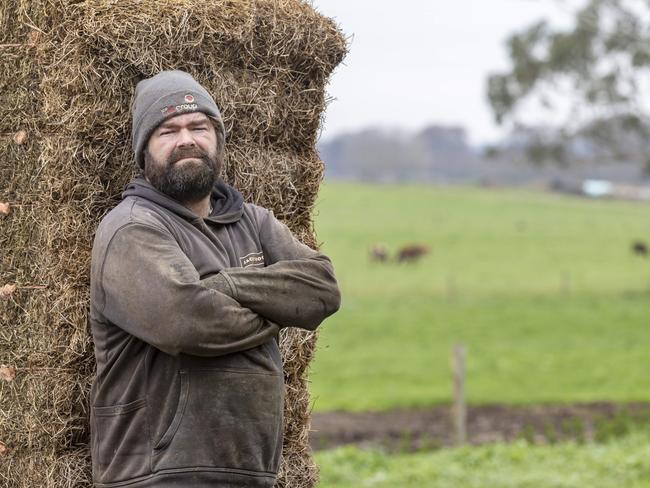Southwest Victoria’s green drought costing dairy farmers thousands
Dairy farmer Jason Smith says southwest Victoria’s green drought is the worst he has witnessed and has him considering his future in the industry.
Located in near Australia’s largest salt water lake in southwest Victoria, Swan Marsh usually lives up to its name by August each year.
In a normal winter, the marsh is mellow and the swans are plentiful across the patchwork of dairyland, just west of Colac.
But this isn’t a normal winter for Jason Smith. He says the ‘green drought’ – where paddocks look green but there is not enough soil moisture for pasture to properly grow – has been harsh to the marsh and could well be the swan song for his dairy career.
“I try to be positive about dairy farming, it’s a job I love,” Mr Smith said.
“With the green drought, it’s hard to be positive. This is Swan Marsh — the reason it has that name is that it’s usually marshy in winter.
“People see the tinge of green in the grass but it’s just a mirage. You can hardly grow anything and we’re able to drive through paddocks that are usually boggy this time of year.
“I worked in northern Victoria during two droughts — the tail end of the millennium drought and then another nearly 10 years ago. This green drought is worse than that — the costs for my farm have been enormous and I’m not the only one. Most farmers in southwest Victoria are hurting financially.”

Already reeling from a cut to the farmgate milk prices at the start of the financial year, Mr Smith says the processor price cut has cost him $220,000.
On top of that, scarcity of fodder has already cost him $100,000 and the dairy season is only seven weeks old.
Mr Smith encouraged newly-installed federal Agriculture Minister Julie Collins and her Spring Street counterpart Ros Spence to see the green drought for themselves.
“It’s an open invitation for them to come to my farm — they’re more than welcome to see how bad it is,” he said.
“No one is blaming them for the lack of rain but we do feel forgotten about. Responsibility lies with the dairy processors — they can step up with their pricing; the banks can play their part with interest rate exceptions; the supermarkets can play a role too.
“The question to all of them is: Do they want a dairy industry? Because I’m considering my future in dairy and I’m not the only one.”





